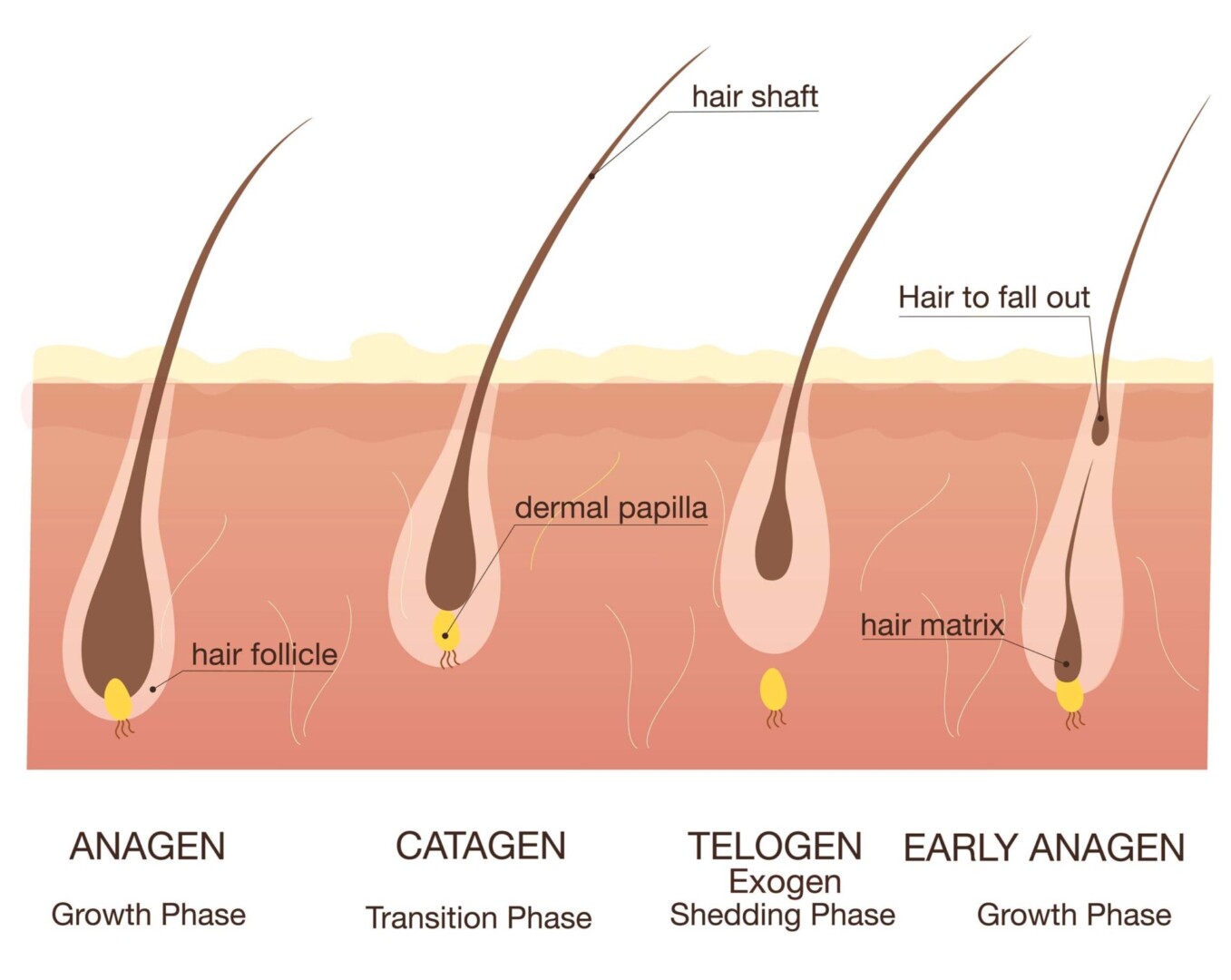Table Of Content

When the thyroid doesn't work correctly, it can cause hormonal imbalances that affect the entire body. People with a thyroid disease may experience hair thinning, fine hair, and thinning eyebrows. Working with a dermatologist, you can begin identifying what might be causing your hair loss. Your doctor will ask about your health, your medications and your family history. Physical and psychological stress can cause hair loss.
The Link Between Hair Loss and Itchy Scalp
“Some patients have reported that before the bald spot occurred, they felt something in that area—a tingling or an irritation,” Dr. Fusco says. Another red flag is a widening part, and the hair loss may be diffused, meaning it’s spread across the entire scalp. Your derm can examine the pattern of hair loss and perform blood work to rule out other causes, says Dr. Jakubowicz. However, this can change during menopause (more on that later) and some women with strong family histories of hair thinning or balding may still experience this. The right hair loss treatment for you will depend on what’s causing your hair loss. The best way to pick a great treatment plan is to talk with your doctor about your hair loss concerns.
Causes of permanent hair loss
Hair loss during pregnancy is not common, but it is possible. During pregnancy, people are more likely to have conditions that cause hair loss, like hyperthyroidism, hypothyroidism, and iron-deficiency anemia. Treating these conditions can help hair thickness return. In males, hair starts thinning near the top of the head and forms a receding hairline (creating an "M" shape). In females, the hair becomes thin all over without a receding hairline.
Androgenetic alopecia
In females with androgenetic alopecia, the hair usually becomes thinner all over the head. Although telogen effluvium doesn’t typically lead to baldness, it may lead to hair appearing thin, especially around the temples and crown of the head. Early treatment of a receding hairline (frontal fibrosing alopecia) might help avoid significant permanent baldness.
Menopause
With this type of hair loss, your follicles gradually shrink and the growth cycle is shortened. After a while, some follicles may stop producing hair. If your hair starts to thin or fall out in clumps, call your healthcare provider or dermatologist.
Why You're Losing More Hair and the New Science to Help Regrow It - Oprah Mag
Why You're Losing More Hair and the New Science to Help Regrow It.
Posted: Mon, 11 Sep 2023 07:00:00 GMT [source]
Losing clumps of hair can be particularly distressing. But there will always be an underlying reason, whether it’s a health condition, stress levels, or family genetics. Essentially, this means there’s temporary hair loss where more hairs enter the telogen phase than what’s typical. Men tend to notice a receding hairline and patches of hair loss on the top of the head. There are things you can try if your hair loss is causing you distress. But most treatments are not available on the NHS, so you'll have to pay for them.
I Slept on a Silk Pillowcase to See If It Reduced Hair Loss—Here's What I Discovered - Vogue
I Slept on a Silk Pillowcase to See If It Reduced Hair Loss—Here's What I Discovered.
Posted: Wed, 31 Jan 2024 08:00:00 GMT [source]
Excessive hair fallout from taking medication is usually temporary. Hair may stop shedding when you stop taking the medication. If you believe medications are causing your hair to fall out, talk to your healthcare provider about changing dosages or finding an alternative medication. Telogen effluvium describes having more than 10 percent of your hair in the telogen phase. Telogen effluvium is temporary, but more hair will fall out while you have it. Stress, surgery, or even having a fever for a few days can bring on telogen effluvium, but your hair will probably be back to normal within six months.

Most start to notice it in their 50s or 60s, but it can happen at any age and for a variety of reasons. And any medical conditions that lead to hair loss should be treated directly to address the condition, not just its symptoms. Women may experience hair loss during menopause due to reduced production of the hormones estrogen and progesterone. Menopause usually affects women between the ages of 45 and 55. Trying to tell if you’re actually losing hair or just experiencing some normal shedding? Read on for more information about hair loss and how to manage it.
But some factors may make a woman more likely to experience hair loss. Yes, treating the thyroid disease can reverse the hair loss. For your hair to regrow, you have to stop pulling it. When a man has hereditary hair loss, the first sign is often a receding hairline or bald spot at the top of his head. A dermatologist is a medical doctor who specializes in treating the skin, hair, and nails.
Most women lose a lot of hair a few months after giving birth. Later in life, some women notice extra shedding during menopause. You might also notice shedding if you’re dealing with other hormonal changes, such as stopping birth control pills. Extreme diets that are too low in protein or certain vitamins, such as iron, can sometimes cause excessive hair shedding.
If you like the idea of adding supplements to your routine, there are some which are specifically formulated to contain ingredients that increase hair thickness and health. PCOS can cause facial hair growth, irregular periods, acne, and cysts on the ovaries. And while you may experience hair loss on your scalp, you may notice more hair elsewhere on the body, Dr. Fusco says. A doctor can take a blood test to look for elevated levels of testosterone and DHEAS (dehydroepiandrosterone), a product of testosterone. Alopecia is an autoimmune skin disease where the body’s immune system attacks hair follicles.
On days you wash your hair, you might lose up to 250 strands. Talk with your doctor about your concerns and the potential causes for your hair loss. With new techniques, many women benefit from hair transplantation surgery.
Alopecia areata is an autoimmune condition that causes your immune system to attack hair follicles, resulting in bald patches that can range from small to large. Hair loss related to androgenic alopecia tends to happen gradually. While some people might experience hair loss as early as puberty, others might not notice symptoms until their middle ages.
Women with hair loss due to alopecia areata may consider treatment with corticosteroids applied to the scalp or injected into multiple sites in the affected area. People with alopecia areata may also benefit from immunosuppressive medications like methotrexate. Not all researchers agree that spironolactone works, and the FDA has not endorsed it as a treatment for androgenic alopecia.
“Avoid tight hairstyles and hair accessories that pull on the hair and handle your hair with care to minimise breakage and damage. See your doctor if you’re concerned about how much hair you are losing every day. A doctor will be able to assess whether your hair loss is normal shedding.
It typically occurs after age 65 but, for some females, it can begin early in their lives. Many people think that hair loss only affects people assigned male at birth (AMAB). However, studies show that more than 50% of people assigned female at birth will experience noticeable hair loss. The most significant cause of hair loss in women is female-pattern hair loss (FPHL). This affects about 30 million people in the United States. Some people may experience excessive hair loss shortly after giving birth.











